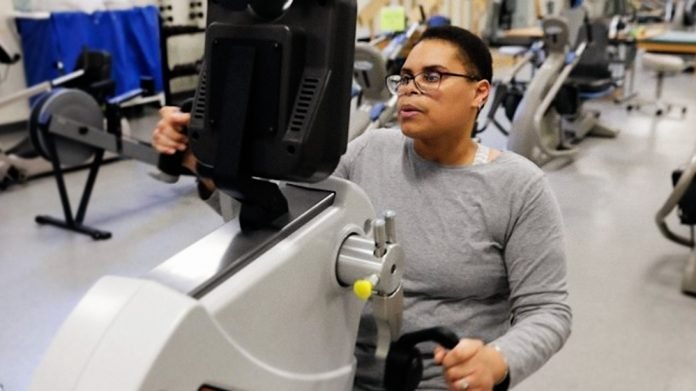
It was Christmas 2015 and Laytoya Williams was overjoyed, celebrating the holidays with her young family. But it would be her last normal holiday.
The next day, she was hospitalized with blood clots in each lung and elevated levels of cardiac enzymes in her blood, a sign of heart damage.
“It was scary. I was 31 at the time, and my heart was beating at 180 beats per minute when I was admitted,” said Williams, who lives in Lansing, Mich.
Little did she know, she was in desperate need of a new heart.
Fighting for life
Heart failure at such a young age seemed incomprehensible for Williams, but she refused to give up and was willing to do whatever it took to stay alive.
“I just thought about my kids,” she said. “I’m their mom, and of course, I do not want to leave them alone, so I told myself that I had to do this, and if I didn’t make it, I put up one hell of a fight.”
In early 2016, Williams was discharged from the hospital with a wearable defibrillator. Later that year, doctors implanted a device that served as a defibrillator and pacemaker.
This allowed her to function normally, and she continued to work and enjoy daily activities until 2017, when her condition took a dire turn.
“I was at the end of life at this point because I was so sick. They gave me two options. I could go home with palliative care or have doctors implant the left ventricular assist device (LVAD) to keep the blood pumping throughout my body.”
Williams said the LVAD was meant to be a bridge to a heart transplant. But since she was so ill, Williams knew something had to change if she was going to become eligible for a new heart.
Transfer to University of Michigan Health
In 2021, Williams made the tough choice to change providers, moving her care from Grand Rapids to Ann Arbor.
“We just didn’t see eye to eye on a lot of things as far as my care,” she said. “So, I decided to go with U of M, and I ended up getting one of the head cardiologists, Dr. Keith Aaronson. I love him. I feel like I was listened to, that I mattered to him
Williams was ready to work on her health, said Aaronson, M.D, a cardiologist at U-M Health Frankel Cardiovascular Center.
“When I met Laytoya and her partner, it was very clear to me that they were both very committed to doing everything that they could to improve her health and to being around for their daughter.
Laytoya has been a wonderful patient and I’m thrilled with how well she has done with her transplant,” said Aaronson.
Williams finally became healthy enough to become a heart transplant candidate in the middle of July 2023.
“I was so excited about it, obviously, and began to wonder how long it’s going to take or when is the call going to come because it could be days, months, or years.”
After getting on the list, she only had to wait nine days.
“Initially, I was in denial. It had only been a week and a few days,” she said. “I was really excited about it and emotional because I waited a long time to get my heart, like a long time. I’m sure somebody else waited a long time too, but that was forever for me.”
Cardiac rehab close to home
Laytoya’s heart journey didn’t end with transplant surgery at University Hospital in Ann Arbor. In fact, it was only the beginning.
With her new heart beating in her chest, Williams now faces the challenge of recovery.
She chose the cardiac rehabilitation team at Sparrow, part of U-M Health, to help her gain the skills and motivation needed to maintain a healthy heart for years to come.
“Having my cardiac rehab closer to home just made things a lot smoother. I live maybe six minutes from Sparrow, so it is easier for me to get here,” Williams said.
“I already have a primary doctor there as well, so it all just worked out for me to just have my cardiac rehab be Sparrow.”
Williams says the team at Sparrow keeps her accountable and makes her feel heard and accepted.
“The team is encouraging and communicates really well. If I have any concerns, they don’t have any problem addressing them, and I don’t have to stress about it, she said.”
Second chance at life
Less than a year after receiving her new heart, Williams feels great and excited about what’s next in her life. Now that she no longer needs her LVAD, she can take a shower and travel wherever she wants, whenever she wants, without worrying about damaging the heart pump.
Williams is also now set to marry her fiancé. And at nearly 40 years old, she’s preparing to go back to school to become a pharmacy tech.
To others awaiting their transplant, Williams says keeping a positive attitude is a key, and encourages everyone to make the most of the precious moments that life gives you.
Written by Corey Alexander.
If you care about heart health, please read studies about the best time to take vitamins to prevent heart disease, and scientists find how COVID-19 damages the heart.
For more information about heart health, please see recent studies about Aspirin linked to higher risk of heart failure, and results showing Blackcurrants could improve artery functions, blood pressure in older people.



